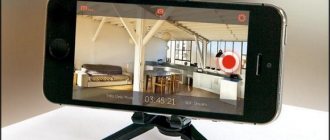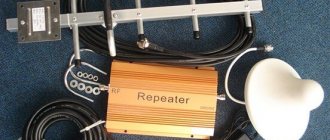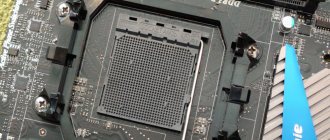Any user of a personal computer, sooner or later, thinks about the need to increase the performance of the operating system, reduce the noise emitted by computer components, and also achieve greater cooling of the components of the system unit or laptop, which to some extent will lead to improved performance of the computer as a whole. If for owners of desktop computers everything is quite simple, just open the lid and simply clean the components from dust or, if necessary, replace the cooling system, fortunately this is done once or twice, then for owners of laptops/netbooks everything is somewhat more complicated. Of course, many modern gaming devices are already equipped with a liquid cooling system, which allows, in principle, not to pay much attention to such issues.
A method for making a cooling pad for a laptop yourself.
For the general segment of laptop computers, there are not many ways to achieve more power from the existing cooling system - this is the same as cleaning the fan blades from dust, or physically replacing it, which does not always actually improve temperature performance. In this case, specialized stands will come to the rescue, which are a metal or plastic substrate, inside of which there is a fan, or more commonly known as a cooler that operates on blowing or blowing. Such systems can be freely found in any computer store, as they are in regular demand and have a reasonable price. But, as mentioned above, the principle of their operation is elementary - these are 1 or 2 large “burdocks” powered by the computer’s power supply using a regular USB cable. So why not make a stand like this yourself, add a unique design to it, and save some good money at the same time? This is exactly what this article will discuss.
Why is it beneficial?
Of course, everyone needs to sensibly assess their capabilities both in the selection of components and in their installation and, in principle, be aware of the appropriateness of the intended action. So why is it beneficial? For example, we have an ASUS K95VJ laptop with a screen diagonal of 18.4 inches. The search for the cooling system in question found that all noteworthy options cost about 2,000 rubles and more. Indeed, taking into account modern realities, this amount does not seem significant, but I also don’t really want to pay that kind of money for a beautiful backlit case, which is essentially a dummy. And in principle, this is a rather dubious investment of funds, the savings of which can, for example, be invested in the purchase of components. That is why the author of this article, like many other users, set out to make a cooling pad on their own with a minimal investment of money and time.
Laptop table drawings
Full-fledged laptop tables are made according to traditional drawings:
- a wooden table up to 50-60 centimeters high with a stand for a mug, telephone and other accessories;
- tables with a hollow body that houses a fan for cooling;
- stands on an inclined structure, inside of which a fan is placed.
You can make a drawing for a table on wheels or a bedside table yourself by measuring the height of the bed or sofa, as well as assessing the parameters of the laptop.
Information! If you have no experience, it is recommended to start assembling the simplest structure.
Where to begin
As with any work process, you should start by drawing up an estimate/plan and determining future stages of installation, which will be discussed below.
1 Step. Drawing up estimates and schematic plans
- To get started, it’s worth answering a few questions:
- “What expectations are placed on the future creation” - for example (for the author of the article hereinafter), this is a convenient substrate located at a slight angle, and 1/2 cooler for blowing in and out. And the goal is to achieve a decrease in temperature indicators by at least 5 degrees.
- “What amount can be allocated for this” - budget 500 rubles.
- “What size/dimensions” - since the device has a diagonal of 18.4 inches, taking into account the location of its legs, the length will be about 36*38 cm, width 35-37 cm.
- “What to make the body/base out of.” Taking into account that the ASUS K95VJ weighs more than 4 kilograms, the material must be durable, but at the same time it is desirable to achieve small dimensions and lightness. Polypropylene water pipes with a diameter of 20 mm should have been able to cope with these requests quite easily.
- “What to make a substrate for attaching a cooler from” - the weight of the cooler is minimal, and there will be no load on the substrate, so it is not required to be excessively strong. Accordingly, the choice fell on an assortment of stationery, namely a binder with a metal clip and the most dense/rough cardboard.
- “What is already available” - there is already an old cooling pad from a device of the same brand “Asus”, but with a screen diagonal of 13 inches, from which you can remove the cooler and power port.
- “What additional tools/items will be required”: Ruler, meter or tape measure.
- Stationery knife or scissors.
- Drill/screwdriver, drill bits and screwdriver.
- Metal hacksaw or jigsaw.
- Marker, electrical tape.
- Bolts, nuts, washers.
- Glue gun or double-sided tape.
- Furniture stapler or regular transparent tape.
Step 2. Purchasing materials
Considering that the list of items and tools given above does not require additional costs, since any average man has all this, all that remains is to purchase:
- “polypropylene pipes” - 1.5/2 meters of pipe (with a margin) on average costs about 100 rubles (in the example, in fact, it turned out to be 75 rubles * 1.5 m).
- “Angles and tees” - four 90-degree angles and two tees - cost a total of 27 rubles.
- “binder folder” - from what we managed to find in the nearest stores, there was a folder with quite thick cardboard costing 120 rubles.
Total: 222 rubles.
Useful tips
Below are useful tips developed by craftsmen with experience in making homemade coasters:
- When installing a large number of fans on a laptop stand, it is worth considering that a lot of noise will come from it.
- Using furniture board in the process of constructing a laptop stand with cooling allows you to achieve the most stable design as a result.
- Having an adjustable laptop stand will help prevent situations where a cup of coffee accidentally spills on the device.
Installation
Taking into account the above diagram, the immediate installation process should also be divided into two parts: the first is the assembly of the case, the second is the assembly and installation of the substrate with the cooling system.
Frame
It is worth noting that further on, for the frequency of narration, individual indicators will be described that correspond to the request and size of the laptop. It would also not be amiss to explain that the author’s mastery of tools is at an ordinary everyday level, so there are roughnesses and unevenness in the details and, in general, the final result does not claim any visual and aesthetic laurels.
So let's get started:
- take a polypropylene pipe of the available length and cut three pieces from it: 1 pc.-38 cm, 2 pcs. – 36 cm.
- Divide the resulting segment into 2 pieces of 10 cm each.
- For strength and tightness of the connection, wrap the ends of the resulting sections with electrical tape. In the future, if you have a special soldering iron, you can connect all the nodes “tightly”; in the absence of this tool, ordinary glue will be enough.
- take the longest piece of 38 cm and insert the ends into the corners.
- insert the corner on one side in two 10 cm sections.
- take two pieces of 36 cm each and insert a tee at the ends of each.
- Assemble the overall structure: insert short pieces into the corners of the longest piece so that the corners point down.
- Insert the free side of pipes 36 cm long with a tee at the ends into these corners.
- check the strength of the connection and the correct selection of pipe lengths.
Fan
As mentioned above, the old device has a fan with a power button and a port for connecting a USB cable. Separately, a board with a speed controller and several lighting elements were purchased for a total cost of 100 rubles, which increased the total amount to 322 rubles. The rest of the procedure is as follows:
- take the binder folder and remove the metal clamping block from it;
- open the folder and measure the required length in accordance with the length of the stand and taking into account a small margin on each side;
- to cut off an unnecessary piece, use a stationery knife;
- since on one side the backing turned out to be softer and would begin to sag a lot after installation, strengthen the “weak” part with the rest of the folder obtained above and creak them together with a furniture stapler or just tape;
- make several holes in the cardboard, taking into account the existing holes on the side tubes of the case;
- take a fan and use a marker to measure the circumference of its blades;
- it is desirable that the blades are located directly under the ventilation holes of the laptop case;
- using a utility knife, cut out the marked circle;
- Using a drill or awl, make holes on the backing for attaching the fan housing.
Here it is worth saying a few words about how the fan should be positioned correctly - for blowing or blowing. Opinions differ in this case; some believe that if you supply air directly to the laptop case, then dust will clog into the ventilation holes, which will increase the frequency of cleaning the computer from dirt, but will cool it to a lesser extent. We should partly agree with this statement. Therefore, as mentioned above, it is planned to install two elements in the stand, one will work to supply air to the case, the other will work to remove it from the case, which will allow for better circulation.
- Next, secure the fan in accordance with the hole you made.
Here it should also be explained why the cooler is installed in this way in the figure. The fact is that the old cooling system had a fan that was attached directly to the plastic substrate, which did not imply its installation in the manner in question. Therefore, it was necessary to cut out its holding plastic part and place it so that the blades were below the level of the cardboard. This was easy to achieve - just use three screws, nine nuts and six washers. That is, the connection has the following scheme - screw-washer-washer-nut-housing-nut. This scheme allows you to lower the fan to the desired depth and at the same time achieve its strong fixation.
- Next, all that remains is to attach the cardboard backing with the cooler to the stand made earlier.
Power and lighting
The final stage consists of installing power ports, a board with a speed controller and, if necessary, lighting elements. The ports and board were placed on the left side of the stand and a glue gun was used to secure it. If you don't have it, you can use double-sided tape. The backlight, purchased at a service center for mere pennies along with the board, is short in length, so it was placed only on one side of the laptop and secured with electrical tape.
What you need for work
An alternative to purchasing a special stand for a gadget is to make it yourself. Before starting work, you need to find out what type of stand will be made. The list of materials needed for the work depends on this.
| Type of material | Description, features |
| Cardboard | You can use cardboard to make a mobile, portable stand that can be placed on a table or other hard surface. In addition, using a cardboard sheet, you can construct a roller device that is easy to use when working on the road |
| Tree | Stands-tables or trays are made from wooden boards, which are installed next to the bed or sofa, and are also used as portable devices for installation on the table |
Wood and cardboard are traditional materials used to construct the stand. In addition to them, you can use plastic and other suitable materials that hold their shape well.
When designing a stand as an overlay for a table, it is possible to create a hollow space between the flat surface and the table top of the stand. This space is suitable for storing flash cards, mice, stationery, and smartphones.
To work, you will need auxiliary tools, with the help of which the structures are given shape and improve the declared functionality:
- sharp stationery knife;
- scissors;
- insulating tape, construction tape;
- construction tools: screwdrivers, construction stapler, jigsaw, drill, soldering iron and others;
- fastening devices: brackets, screws.
If we are talking about constructing a full-fledged stand with a fan, then to create it you will need a mini-computer fan, a plug, a cable, and batteries. As an adapter, it is recommended to use switches from lamps that have a simple design. As a device for receiving electric current, the best option is to use a power supply from an old phone or router.
The design with a fan is preferable to the usual device, which is made to create an angle of inclination that allows cooling the processor. The fan is able to quickly cool an overheated device when turned on in a directed manner. When the fan is constantly running, the lower part of the case does not have time to heat up.
Reference! It is recommended to sew the fan into the tabletop or place it on the left side of the laptop.
Cut a hole in the case to reduce the temperature
In addition to the booth itself, we also had to come up with a laptop. HP gets very hot. I don't remember when, but I had to take out the standard laptop fan and replace it with a small Gelid Silent 5 FN-SX05-40 - I wouldn't say it helped much, but it worked for a while. He also linked it via reobass.
At some point, it was decided that an additional hole would need to be drilled into the laptop to improve airflow and reduce temperatures.
It was also simple:
- Disassembled laptop
- Mapped
- I made a lot of holes with a drill
- Side drilling done with care
- Clean file
- Made small holes for screws
- Screwed to the network
- Colored the silver screws with a black marker
How to make an inexpensive computer desk
A very good option for a computer desk, it takes up practically no space, the height can be adjusted at your discretion, there is great depth, there is even a place where you can stretch your legs.
For the tabletop you need to buy a chipboard 60 centimeters wide or use a tabletop from an old table. The system unit is attached to the wall using special brackets, and you also install a socket block under the tabletop. Shelves above the table are at your discretion, you can have one tier, you can have three. Photo source eurosamodelki.ru/katalog-samodelok/mebel-svoimi-rukami/delaem-nedorogoi-komputernii-stol-svoimi-rukami Author Danov
About symptoms
How to tell if your laptop is overheating? Yes, it is very simple, and this is done both by indirect and direct signs.
The temperature sensor installed inside will directly indicate that the device requires additional cooling or shutdown. You can extract the necessary information from it through BIOS / UEFI or the HWInfo utility (can be launched in the mode of viewing data from sensors), HWMonitor or another with similar functionality.
These programs (consider the second example) show the minimum recorded, current and maximum recorded sensor values and display the rotation speed of the chiller.
Information from the instructions for the laptop or the official website of the developers of its components will help determine the permissible temperature range of the device.
A couple of factors will indirectly indicate a high case temperature:
- hot back cover and very hot air escaping from the case;
- increased chiller noise.
Loud laptop fan noise
Instructions
The cooling pad is the simplest product. I wasted my time trying to make everything as accurate as possible.
1. I measured the laptop and calculated the size of the future holder (I did this before I went to the store, and then again after).
2. Mark with a ruler and cut out the bottom of the metal (bottom) with scissors. Filed.
3. Cut out the top of the mesh. Filed to prevent sticking and cutting during use.
4. Screwed the fan on top. Self-tapping screws are included in the kit. The fan is very quiet. I was especially looking for a large one - 20x20 cm.
5. Measured and sawed all the necessary boards with a hacksaw. Smooth them out.
6. Drilled the boards around the perimeter: I drilled holes for screws so that the shaft would not split into two parts when screwed in.
7. Secure the bottom with self-tapping screws to the wooden parts.
8. I covered all the necessary points with black electrical tape: I paid special attention to the sharp edges of the mesh.
9. Attached the mesh with the fan using self-tapping screws (in the photo the moment before gluing with electrical tape).
10. I cut out the PVC walls of the corners (I had to measure everything very accurately) and processed them with a file.
11. I sealed the walls with double-sided tape (after some time I removed the tape and glued it with epoxy glue).
12. I connected the rheobass (fan controller) to the power supply and holder by correctly inserting the wires in the right place that go through the switch.
13. Fixed everything under the table: everything is hidden and convenient
Drawing
Before making a piece of furniture, it is necessary to make a preliminary drawing. It indicates the exact dimensions of the table and the materials used to make it.
If you can’t make a drawing yourself, you can find a ready-made sketch on the Internet, you can contact specialists in this field, or simply use a special program for furniture makers. The last option is the simplest. After you draw or print a finished sketch of the future table, you will need to transfer it to the wooden surface of the prepared materials.
Attention: before making the table, you should once again carefully calculate the dimensions and place control points on the material.
Recommendations for the design of ready-made tables
To ensure that your creation is not only functional and reliable, but also attractive, you can follow some tips. They will help to put a stamp of individuality and style on your table:
After cutting the tabletop, it is recommended to process it on all sides. If you lose sight of this detail, the edges may lose their original appearance after some time.
If you adhere to minimalism in design decisions, then simply coat the table with varnish to ensure the shine and smoothness of the tabletop. At the same time, you will protect the product from negative external influences.
Combine models, bring in your ideas, add details - your imagination will allow you to create the perfect table! Your hands are capable of creating masterpieces!
Advanced homemade products
But it was a pretty cheap option. If you have at least one “five-wheeler” in your pocket, you can plunge into the steppe of homemade products. The shopping list is as follows: a simple computer fan, a USB type A socket, electrical tape and glue. In general, an old charger will do instead of USB, and for convenience you should get a ten-centimeter cable. The tools you will need are a soldering iron. Plywood is a good base for support, although binder will work.
In the holder, whatever it is, we drilled a hole in place of the laptop ventilation grille. Not just in any case, but according to the size of the purchased cooler. It must be fixed in the hole in any convenient way. And it is advisable to blow from the laptop. Also, the algorithm may differ depending on the materials.
If you have an old charger, cut off the end and expose the electrical cord. We do the same with the fan, but only with two wires. Red and black are often necessary, but yellow will be superfluous. Next, we connect advantages with advantages, disadvantages with disadvantages, and isolate the junction. Ready! Connect the charger and the fan will start spinning.
With USB things are a little different. We will need to take a soldering iron and solder the negative wires to the fourth terminal of the plug, and the positive wire to the first. Here it is very important to have a good understanding of pinouts and avoid mistakes. Otherwise, a short circuit will damage the laptop. And then do the same again - connect cable to cable and isolate the joint. The USB drive is connected to the laptop and the fan spins.
If desired, you can also get confused with the map, speed controller and other gadgets. It will still be cheaper than getting the refrigeration from the store.
Manufacturing
- Two boards obtained after sawing are placed on legs of the appropriate size depending on the diagonal size of the screen.
- Irregularities are smoothed out using available tools. A wider board without irregularities and knots is prepared for the base, cut to size and sanded.
- Ventilation holes are made. To do this, simply trace the fan contour with a pencil directly under the heating parts of the laptop.
- The holes are drilled in a square shape. All parts fit well together and are secured.
Bottom line
Creating a powerful laptop cooling system and maintaining all its internal parts in good condition is a completely doable task.
By spending a few hundred rubles, you can make an excellent cooler of the required size and power with your own hands.
The product options presented in the article can be easily supplemented and improved, it all depends on your imagination and ingenuity.
Thematic videos:
DIY laptop stand. - How to do it? #1
In the video I will show you how you can save money on buying a laptop cooling pad. I’ll say right away that this is not the final version, a lot can be improved. The video shows the principle of operation of the stand.
DIY laptop cooling pad
DIY laptop cooling stand. To make it you will need a pair of hands, plexiglass, and a cooler.
Materials
A tray with legs is another name for a serving bed table.
They also use a simpler and cheaper species - pine. But pine wood is very soft, so you need to handle it carefully. Wooden portable tables can simply be well polished, or they can be varnished and decorated with carvings. They are selected according to the taste of the owners or the surrounding environment.
With a table top made of plywood or plastic
There are also glass and plastic models. Glass tables for breakfast beds are usually made in combination with a wooden frame and legs; you can find a glass + metal option. But glass models are not so numerous, since they still require special handling.
Plastic models, maybe not so elegant, but definitely practical
The cheapest and, at the same time, the most practical are plastic bed tables for serving breakfast in bed. They are very easy to care for, they are light and quite durable. The legs in such models are usually metal, painted in a contrasting color or to match the tabletop.
A less numerous group is metal portable tables for bed. They are positioned more as a part-time laptop stand, but can also be used for serving. They are convenient because they have a wide range of leg height adjustment.
Metal bed tables look very modern
If desired, you can find bamboo tables. The frame can be covered with matting, made of bamboo wicker or other environmentally friendly material.
Bamboo is an exotic material for our country, but you can also find a bamboo table for breakfast in bed
You can probably find bed tables made of other materials. Anything can happen. By the way, the shape of this tray-table can be not only rectangular, but also round, although this option is very rare.
Round table for breakfast in bed
There are even more elegant models - with carvings, bent or curly legs, but they are not suitable for every interior.
Homemade cooling system
Photos
That's what came out of it:
Laptop Cooler Laptop Cooling System Cool Your Laptop Laptop Cooler
Description
I have Asus X51RL. I can say that I was lucky because the radiator does not come out from the side, but from the back. Thanks to this, the homemade system is located at the back and covers the screen. Before installing this device, the processor temperature in quiet mode rose to 55 degrees, then the standard fan turned on, lowered the temperature to 47 degrees and turned off. And so on every five minutes. Of course, this damaged the processor and my nerves. After installing the artificial cooling system, the processor temperature is constantly maintained around 43-45 degrees. That is, the temperature dropped by an average of 10 degrees. An ordinary refrigerator is resting. Sometimes it connects at the slowest speed in games and with heavy storage. Due to the fact that the device draws air through the heatsink, the overall temperature of the laptop has decreased and it does not heat up. For example, before installing the system, the hard drive warmed up to 45-50 degrees, and now it’s no more than 40.
Design
The design is very simple. The body is a piece of cardboard from a document folder. In principle, it can be made from anything. The fan is a standard 120mm cooler for a 12V system unit. It can be powered from the laptop's built-in USB port, but there is a risk of burning it out in the event of a short circuit. Therefore, it is better to buy the simplest 12 volt power supply. If the cooler is too loud when running on 12 volts, you can easily reduce the voltage using a resistor. The cardboard and cooler are glued together with glue and additionally secured with electrical tape. The cooling system inlet must be closed from opening the radiator.
Operating experience
More than 5 months have passed since the installation began. I decided to clean my laptop from dust and wrote an article about it. If you read it and look at the photos, you will notice that a very thin layer of dust has accumulated under the back cover. As it turned out, the homemade cooling system literally pulled out all the air by force. Dust has appeared on the chiller impeller.
Layer of dust on the cooler Dust on the impeller
Thus, this device prevented dirt from accumulating inside the laptop. For preventive purposes, I supplemented the lubrication of its bearing with machine oil.
Lubricant replenishment
A simple design made of polystyrene foam and a homemade fan
This method is suitable for those who want to save as much as possible, because the resulting fan will cost you several tens of rubles, and it can be made from any bottle and a piece of foam rubber.
The base of the structure will consist only of foam plastic.
To make the product last longer, we recommend using dense extruded foam or polystyrene foam (sold at any hardware store).
Cut it to fit your laptop.
The cooler design should not come into contact with the table surface. It is advisable to make 4 more small figures from polystyrene foam on which the product will rest.
This will ensure better air circulation.
Please note that the correct position of the cooler involves a slight tilt towards the user, so make one leg 3 centimeters high and the other two centimeters high.
Therefore, the first two parts will support the back.
Rice. 6 - create a frame for the stand
See also: DIY rope knife
You can attach the foam parts to each other using simple PVA glue or superglue
Wait until the frame is completely dry before moving on to the next working steps.
Cut 4 more squares and attach them to the corners of the top of the refrigerator to create this look:
Figure 7 - Creating the front part of the chiller frame
When you place the laptop on top of the product, it will not stick to the case, creating more room for airflow.
All 4 squares must be the same height. As shown in the image above.
Now we need to create a ventilation mechanism. It will be made of ordinary plastic. Take any bottle, cut off the top and draw this detail:
Rice. 8 - create a fan
The resulting element will become a fan base. In order for the blades to rotate, forming a direct air flow, it is necessary to slightly change the shape.
To do this, take a candle and light it. Bring the fan up to heat and heat the base of each blade by rotating them in one direction at a time:
Rice. 9 - formation of blades
Drill a hole in the center of the cooling system according to the size of the fan.
If the blades are too long, trim them and turn the edges again over the heat to smooth them out.
Take 4 popsicle sticks and secure them to act as a support for the vent. You can fasten the sticks with regular masking tape.
It is better not to use glue. Install the fan as shown below.
Rice. 10 - create a cooling structure
Take a simple motorized mechanism (available at any electronics store) and attach a bottle cap to it. Place the resulting part in the center of the blades:
Rice. 11 - create cooling
Take a USB cable and solder it to the motor. Construction is ready. Now you can decorate it by painting it any color.
Fig. 12 - checking the operation of the device
Stand options
It is inconvenient to use a laptop while holding it on your lap. You can neither relax in comfort nor work properly. There are a sufficient number of interesting options from which you can choose the appropriate one and make an original and simple stand with your own hands.
For example, make a table, only on short legs. It can then be placed on a bed, sofa or regular dining table. Convenient and practical. The material can be very diverse. For those who prefer to maintain the overall style of the interior, it is better to choose the appropriate tree. A less expensive option is well-compressed rigid cardboard. The main thing is to follow the drawings and clear instructions for them. Such a stand must have a slope so that the user can comfortably look at the screen and work.
The corner can be made movable. This is very convenient so as not to constantly manipulate the laptop lid. By the way, you don’t have to cut the parts yourself. Any specialized workshop will quickly cope with this task. But it’s always more interesting to collect it yourself. You can adjust and fine-tune all the little things that are individual to the owner and his faithful “assistant”.
Note!
- DIY furniture made from pallets (140 photos) - step-by-step master class with diagrams and drawings, design ideas
DIY coffee table - manufacturing guide with a full description of the steps, choice of materials (120 photo ideas)
- Do-it-yourself laundry basket (130 photo ideas): step-by-step master class for making it yourself, choice of materials, design options
For those who are familiar with the technique of working with a jigsaw, you can make a stand without nails and screws.
By the way, don’t forget about ventilation. This is the basis. You can make holes in a circle in the right places, or you can make grooves or a special recess in size with outlet parts for hot air.
Advantages and disadvantages
The Cooler laptop stand is good because:
- very easy to do. By following the tips and collecting the necessary information on the Internet, making such a specific stand for your laptop is absolutely not difficult;
- the cost of the material is the cheapest;
- good performance.
Disadvantages of this design:
- not strong enough;
- it only lowers the temperature by a couple of degrees. This can be changed. The lower part of the computer is unscrewed and air is taken directly from the heating pipes;
- the presence of a noise effect, which mainly depends on bearing wear.











